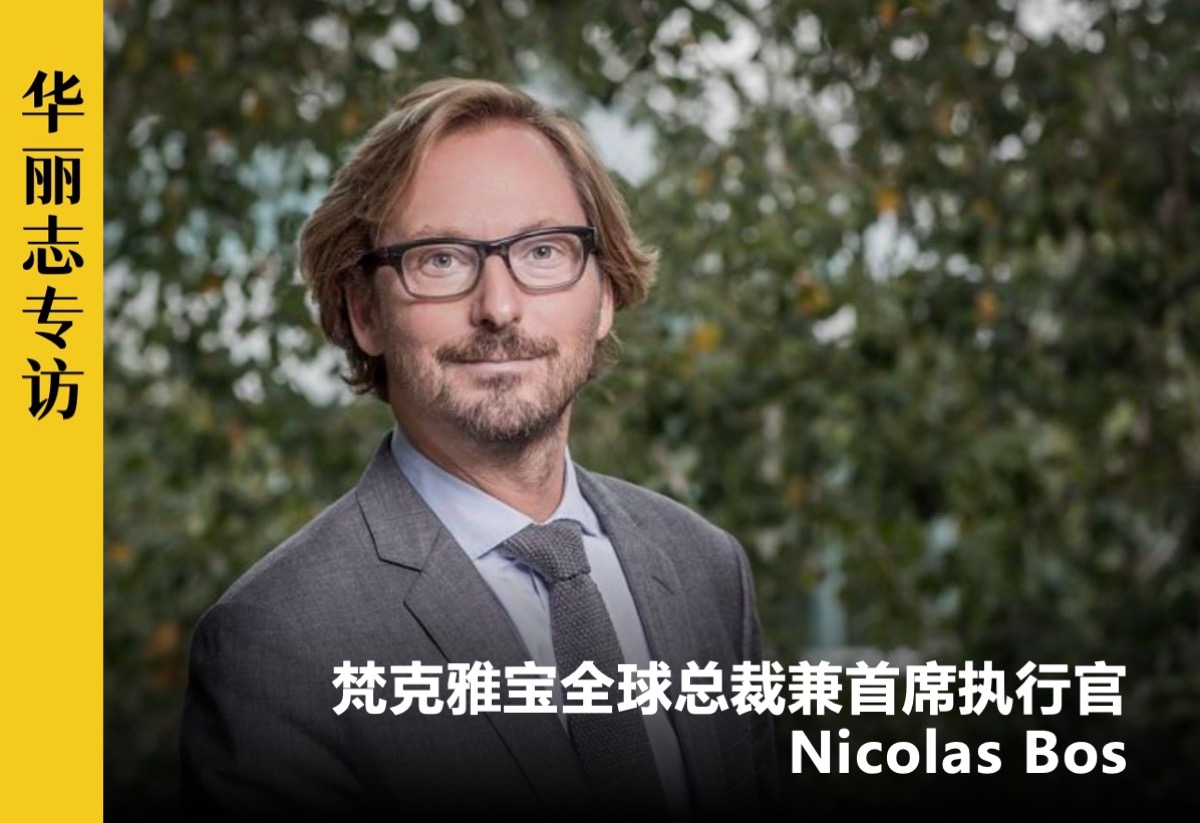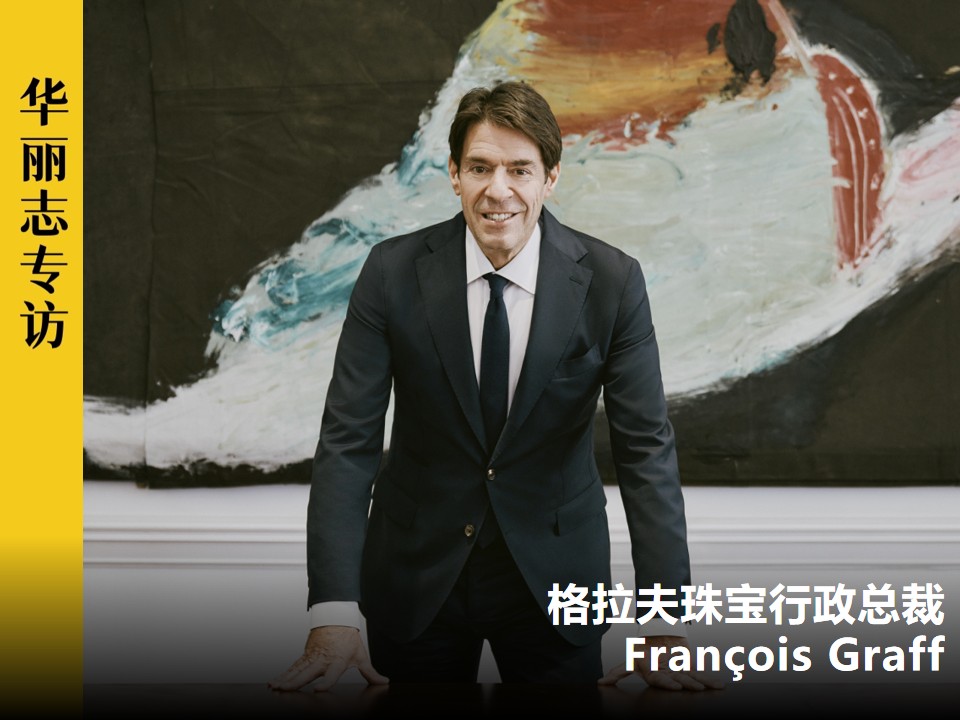“Anyone familiar with Van Cleef & Arpels will notice that many of the Maison’s inspirations are figurative—such as four-leaf clovers, flowers, butterflies, ballerinas, and fairies. The Perlée collection, however, places the emphasis on craftsmanship,” said Laura Lai, Managing Director of Van Cleef & Arpels China, in an exclusive interview with Luxe.CO.
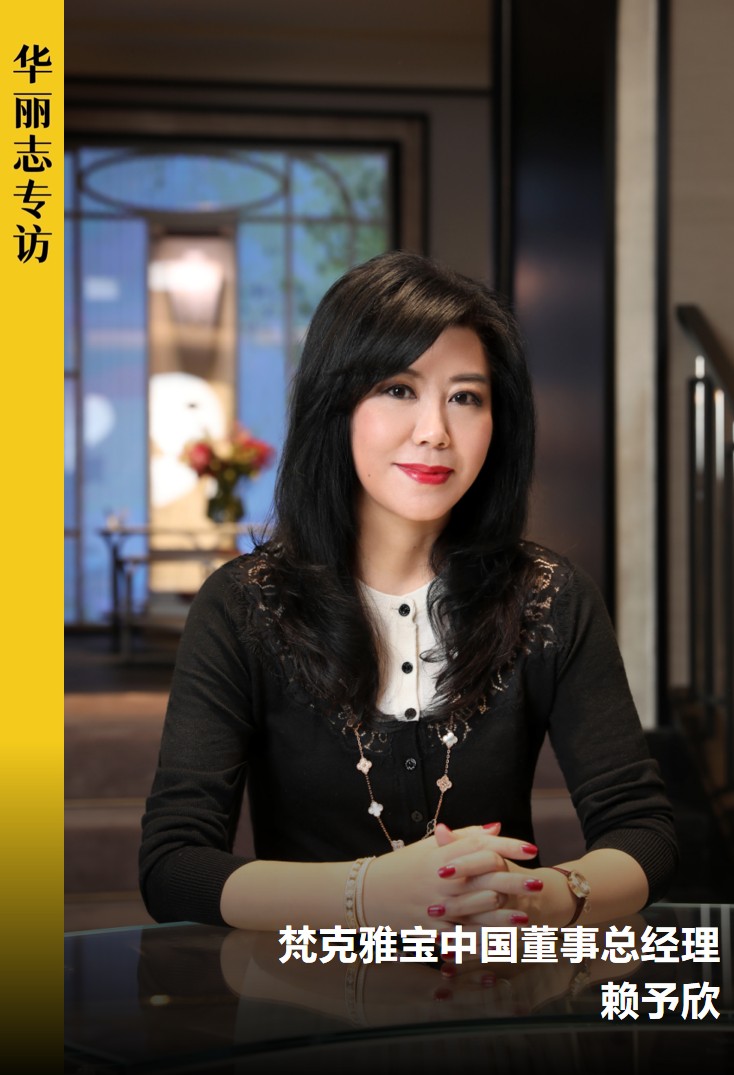
Even if you’re not familiar with the name “Perlée”, the design is likely recognizable: in the Maison’s iconic Alhambra four-leaf clover collection, the motif is often encircled by the signature golden beads of the Perlée collection.
During her conversation with Luxe.CO, Lai Yuxin emphasized, “Van Cleef & Arpels is intentionally developing the Perlée collection as our second major signature line.”
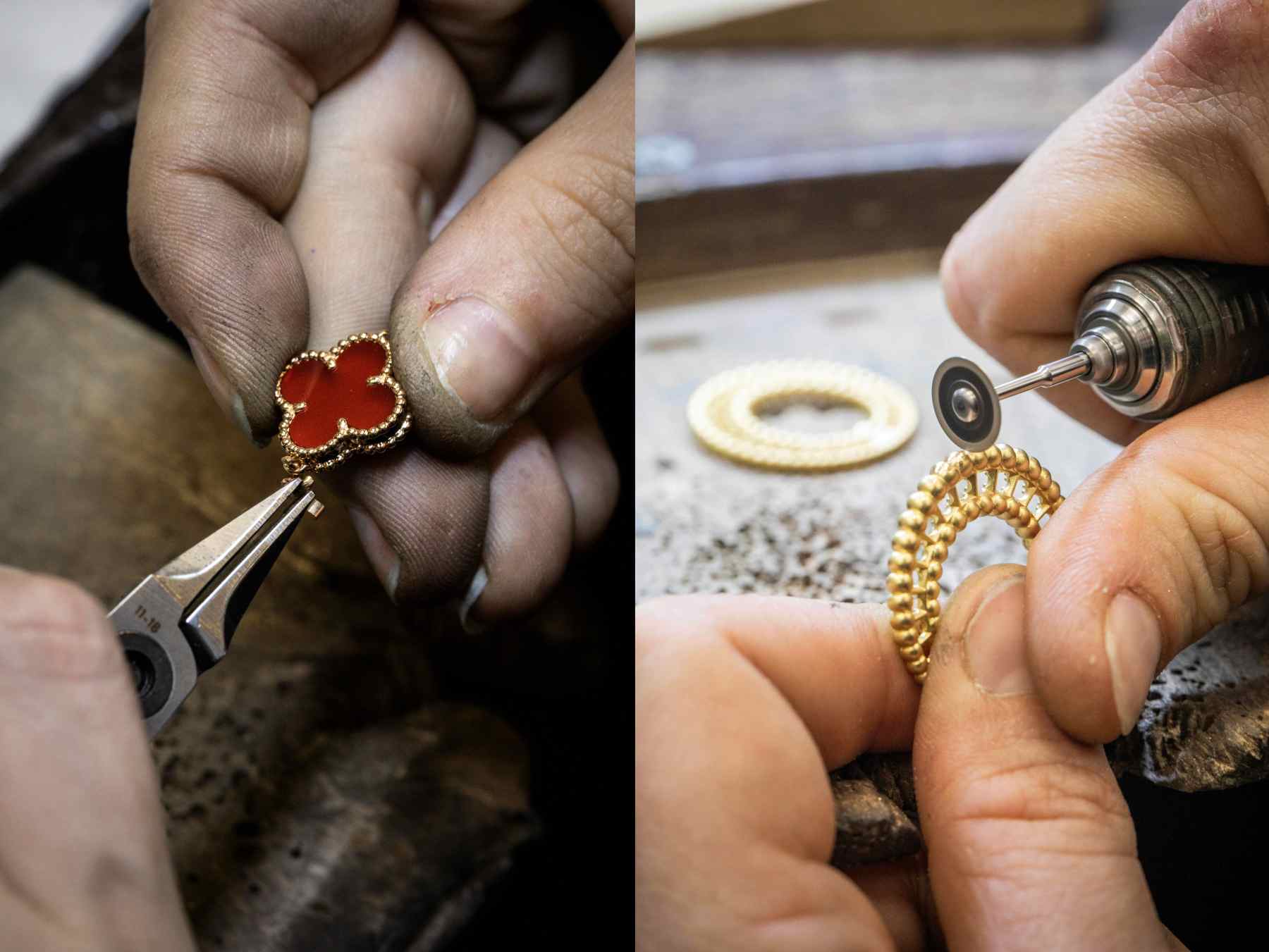
Above left: Alhambra collection; above right: Perlée collection
Though officially launched in 2008, the signature golden bead craftsmanship of the Perlée collection dates back to the 1920s. Today, Van Cleef & Arpels aims to elevate this classic technique into a central pillar of its jewelry design, interpreting it through a contemporary lens to breathe new life into a century-old tradition.
This pursuit of artisanal essence is precisely what gives haute joaillerie its timeless allure.
In this exclusive interview, Laura Lai shared the product strategy behind the Perlée collection. As the very first employee of Van Cleef & Arpels in the Chinese Mainland, she also offered unique insights into the complexities of the current local market and revealed how the 119-year-old Maison continues to thrive across economic cycles.
,Perlee-pearls-of-gold%E6%88%92%E6%8C%87(%E5%B0%8F%E5%8F%B7%E6%AC%BE%E5%BC%8F),Perlee-diamonds-duo%E6%88%92%E6%8C%87-4.jpg?x-oss-process=image/resize,m_fill,w_1200,h_1800)
Why Did Van Cleef & Arpels Choose the Perlée Collection?
Van Cleef & Arpels has created dedicated themed pop-up experiences for the Perlée collection for two consecutive years. Beginning June 5, the Perlée pop-up debuted at Hisense Plaza in Qingdao, with future stops in Fuzhou, Xi’an, Ningbo, Beijing, and Shanghai.
At the most recent China International Import Expo, the Maison also spotlighted the Perlée collection as the centerpiece of its showcase.
“Among all Van Cleef & Arpels collections, Perlée is likely the one with the most versatile wearability,”
Lai told us.
“It encompasses everything from necklaces and earrings to bracelets, crafted in a range of materials including precious metals, ornamental stones, and gemstones, and offers a broad price range.”




She offered a vivid analogy: if iconic, figurative designs like the Alhambra four-leaf clover collection represent the “longitude” of Van Cleef & Arpels, then the Perlée collection is its “latitude.”
“It weaves all our creations more tightly together. Through a mix-and-match strategy, the Maison’s entire offering becomes more dimensional.”
The golden beads are made from precious metals using a lost-wax casting technique. Each bead is meticulously hand-polished by master jewelers, then finished using mirror polishing and stone-setting methods to achieve a variety of luminous textures.

The golden bead, universally appealing and timeless in form, is a classic motif. Van Cleef & Arpels has cleverly infused this traditional craft with contemporary elegance, carving out a new growth trajectory for the brand through continuous innovation.
When asked about the unique significance of the Perlée collection within the Maison, Lai emphasized: “At Van Cleef & Arpels, nothing is created out of thin air. Every piece is an extension of our past. Perlée is unique in that it’s not figurative like our other collections. It showcases the Maison’s craftsmanship and heritage from a different perspective.”
In just over a decade, the Perlée collection has developed into a rich product line. With new additions introduced annually, it now includes six sub-collections, even extending into timepieces. This year’s new launches continue to expand their variety in wearability, materials, and color palettes, while maintaining seamless compatibility with other Van Cleef & Arpels lines.


Above: New pieces include the Perlée couleurs pendant, Perlée couleurs Between the Finger ring, Perlée couleurs bracelet, and Perlée Toi & Moi secret watch
For global consumers, the rounded, full form of the golden bead conveys a universally understood visual language, often associated with positive symbolism across cultures. Through the Perlée collection and its golden beads, Van Cleef & Arpels aims to express a spirit of “joy.”
“As time has gone by, we’ve reached a point where we feel it’s the right moment to elevate the Perlée collection more prominently within our product portfolio,”
Lai stated.
“You See, We’re Always Doing the Same Thing”
While the global luxury industry is entering a new adjustment cycle, Van Cleef & Arpels remains committed to long-term investment and steady development.
“Van Cleef & Arpels continues to host event after event to invite people to deeply understand the Maison. This reflects our belief in the long-termism of luxury brands,” said Lai.
In recent years, Van Cleef & Arpels has launched a wide range of themed initiatives in the Chinese Mainland, including the springtime “Enchanted Spring” garden-inspired pop-up, the “Time, Nature, Love: A Century of High Jewelry Art” exhibition, and the recent showcase “The Stage Jewels of the Comédie-Française” organized by L’ÉCOLE, School of Jewelry Arts, which Van Cleef & Arpels helped found.
To create a more interactive experience of the Perlée collection for local audiences, Van Cleef & Arpels once again collaborated with French artist Arthur Hoffner to design the latest Perlée pop-up experience.


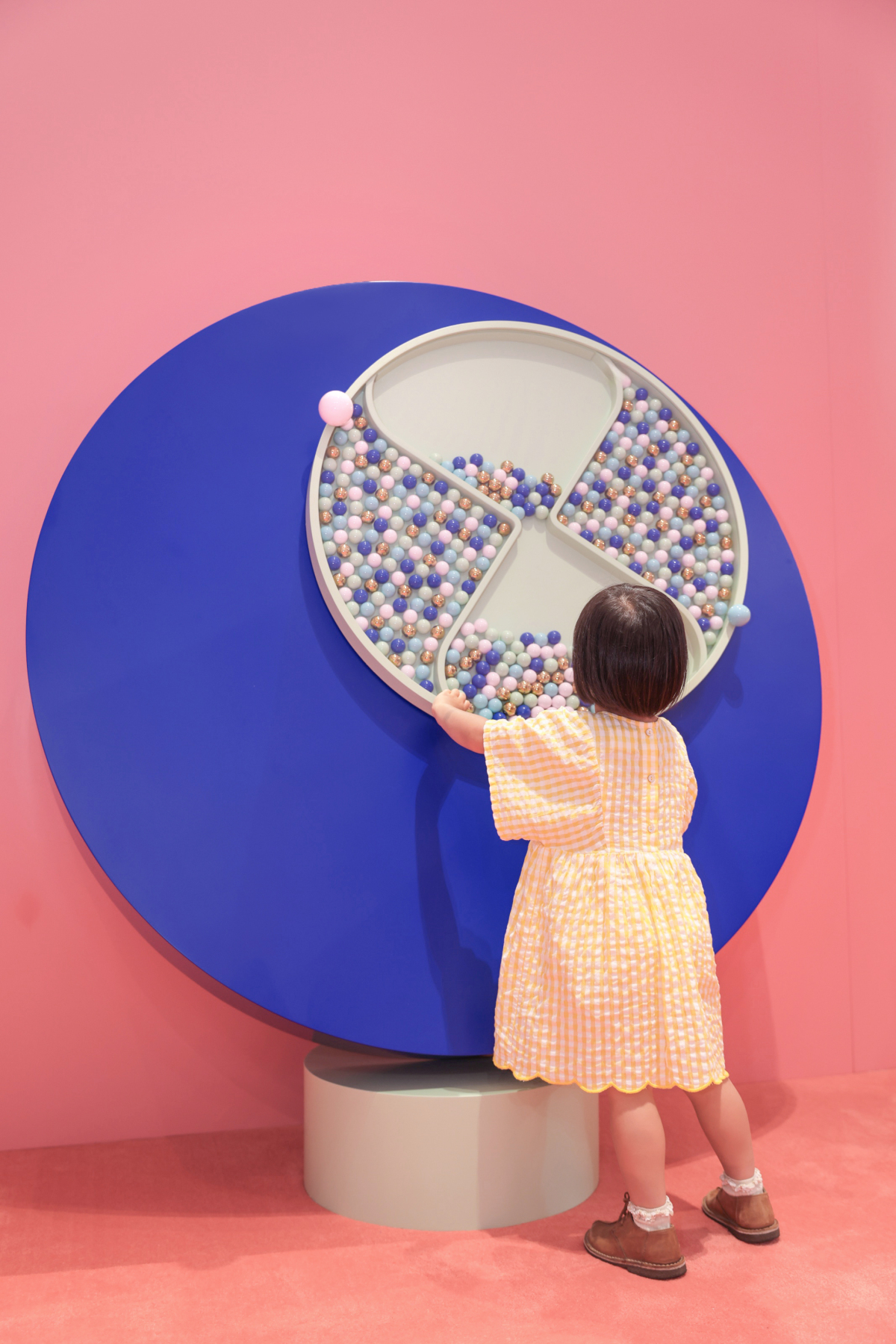
Above: The Perlée pop-up features interactive installations such as “Lucky Encounter,” “Playful Maze,” and “Golden Beads in Motion” to convey themes of “joy” and “whimsy.”
Notably, the Perlée pop-up does not engage in retail sales and is not even adjacent to Van Cleef & Arpels boutiques.
The Maison wants visitors to feel a personal connection with the pieces in an immersive atmosphere because, as Lai explained, “Luxury consumption is largely about imagination. It takes a lot of personal interpretation beyond the design itself, something only the individual can experience and fill in for themselves.”
From a long-term perspective, Van Cleef & Arpels is making sustained investments day in and day out, steadily producing high-quality content that builds brand value capable of withstanding the test of time.
Lai shared a particularly moving story with Luxe.CO. It was one that came up during a casual conversation with a new team member:
The young man and his girlfriend had admired Van Cleef & Arpels during their student days but couldn’t afford a purchase. Ten years later, on his wife’s 30th birthday, he finally gifted her their first piece: a pendant from the Alhambra four-leaf clover collection.
This seemingly simple story left a deep impression on Lai. “He could have bought anything at age 30, but he chose what he had wanted ten years earlier. That shows the enduring value of the piece. His desire for it hadn’t changed over a decade.”

Luxe.CO: How do you view long-termism in luxury jewelry?
Laura Lai: Every item sold by a luxury brand is, at its core, a promise to the customer. You must ensure that the promise made today remains as strong and meaningful ten, or even a hundred years from now. Only then can it be called true luxury.
Even though we may appear to be doing the same things repeatedly, not necessarily chasing trends, we possess extraordinary consistency. This ongoing, reliable delivery of value is what underpins our growing market share. In my view, this is what luxury truly offers its clients: enduring value.
If a young person steps into our space at age 20 and feels inspired, I believe many of them will one day become our clients.
Everyone matures into a consumer at their own pace, some sooner, others later. Our role is to uphold our commitment like a slow-cooked stew: patiently simmering until it’s ready. When that time comes, their love for the Maison will only grow deeper and more intense.
Luxe.CO: What trends have you observed in Chinese consumers’ luxury jewelry purchases?
Laura Lai: Jewelry has a remarkable resilience. Throughout human history, it has always been a powerful symbol of ceremony. Compared with fashion or handbags, which are more susceptible to fleeting trends, gold and gemstones hold intrinsic, lasting value.
Especially in uncertain economic times, consumers are more inclined to choose items that preserve value and align with long-term thinking, making jewelry a natural priority. It’s not just Van Cleef & Arpels; many jewelry houses have demonstrated strength in recent years.
During the pandemic, as outbound travel was restricted, luxury consumption in the Chinese Mainland rebounded sharply, with total spending doubling. In the post-pandemic era, amid ongoing economic volatility, the enduring value of jewelry has become even more appreciated. The recent surge in demand for traditional gold jewelry from heritage brands shows that Chinese consumers deeply recognize jewelry’s long-term value.
That said, the consumer demographic is evolving. During the pandemic, brands focused heavily on Gen Z, but today’s economic downturn has hit young people particularly hard. Still, as a brand, we must be very cautious not to underestimate the younger generation. They are redefining what “luxury” means, not just chasing viral hits, but focusing more on inner value.
How to Refine and Cultivate a Store Network
Last year, themed pop-up events for the Perlée collection were concentrated in tier-one and emerging tier-one cities such as Shanghai, Beijing, Nanjing, Wuhan, Shenzhen, and Hangzhou.
This year, the Maison has expanded its presence to emerging tier-one and tier-two cities like Qingdao, Fuzhou, Xi’an, and Ningbo, choosing Qingdao as the launch location for the campaign.
Lai explained the reasoning behind the location strategy: “These choices were made with care.”
Currently, Van Cleef & Arpels operates 31 boutiques and flagship stores in the Chinese Mainland (excluding duty-free locations), maintaining a steady pace of opening one to two new stores each year.
“We have a 3-to-5-year cultivation plan for every new store,” said Lai. “Pop-up events are a key part of that strategy. We tailor the content of these activations based on how long we’ve been present in a given city and an analysis of the local client base.”
“If the market is still new and the audience has limited awareness of Van Cleef & Arpels, it’s not yet suitable for a Perlée pop-up. Instead, we begin with more figurative, easily relatable themes such as nature or springtime gardens—like the Alhambra pop-up or the ‘Van Cleef & Arpels Spring Garden’ experience.”

Above: Van Cleef & Arpels “Spring Garden” pop-up at Ningbo Hankyu Department Store
“If the market is more mature and the clientele is ready to absorb deeper storytelling, we then introduce the Perlée collection.”
“In markets where high-end consumers are particularly well developed, we may even begin by promoting timepieces, such as through the ‘Poetry of Time’ watch exhibition.”
This year’s Perlée pop-ups arrived in Qingdao, Fuzhou, Xi’an, and Ningbo. These are all cities where Van Cleef & Arpels boutiques were opened around three to four years ago. Lai believes these cities have now completed the first stage of market education, and the Maison is poised to further develop its presence there.
Luxe.CO: What is Van Cleef & Arpels’ store expansion strategy in China?
Laura Lai: We will continue to open new stores in China. That will not change. In retail, physical interaction with consumers is essential.
Luxury consumption isn’t just about the product. It’s an entire experience. Even if I only buy a Sweet Alhambra pendant at a store, the way the piece is presented, the boutique environment, the service of our advisors, the stories they tell, even the water I drink or the scent I smell in the boutique—all of this communicates the values we want to share. Together, they create a complete customer experience.
However, store openings are not determined solely by the brand’s intentions. Some high-potential cities lack the infrastructure for high-end retail, which limits our ability to enter. The relationship between brands and mall developers is one of cooperation. As more top-tier mall developers expand their footprint, it will create new opportunities for us to enter additional markets.
The pace of store expansion is also related to the product category. Consumers typically begin their luxury journey with cosmetics, then move on to handbags and ready-to-wear, and finally to jewelry. This means jewelry brands expand at a slower pace than beauty or fashion brands—a natural progression that applies globally.
At the same time, in a vast market like China, e-commerce is crucial. Our online sales channels reach more than 700 regions across the country. The Maison’s awareness has already penetrated many remote areas. E-commerce also allows us to meet different customer needs, enabling them to acquire our pieces at the time and place that feels most comfortable to them.
“In Times of Uncertainty, Staying Steadfast Isn’t Easy, but It’s Essential”
In 2010, Van Cleef & Arpels officially entered the Chinese Mainland market with a fully directly operated model. Lai was the Maison’s very first employee in the region. She shared her observations of the shifting market landscape, noting that while the luxury sector is under pressure, periods of crisis can also present opportunities.
With 119 years of history, Van Cleef & Arpels has weathered multiple economic cycles. This gives the Maison a longer-term view of the current market fluctuations.
Lai emphasized that during difficult times, it is more important than ever for a brand to focus on long-term development and to be clear on what strategies truly suit its identity. The next step is refining execution with meticulous attention to detail.
Whether it’s the Alhambra four-leaf clover, natural motifs, or the joyful golden beads of Perlée, these themes resonate with universal human values. Although consumer preferences may shift with trends, the commemorative and self-rewarding essence of jewelry consumption remains constant. That enduring value is what guides the Maison’s long-term development.
As Laura Lai put it, “Amid various crises, the key is to possess the strength to develop with consistency over time.”
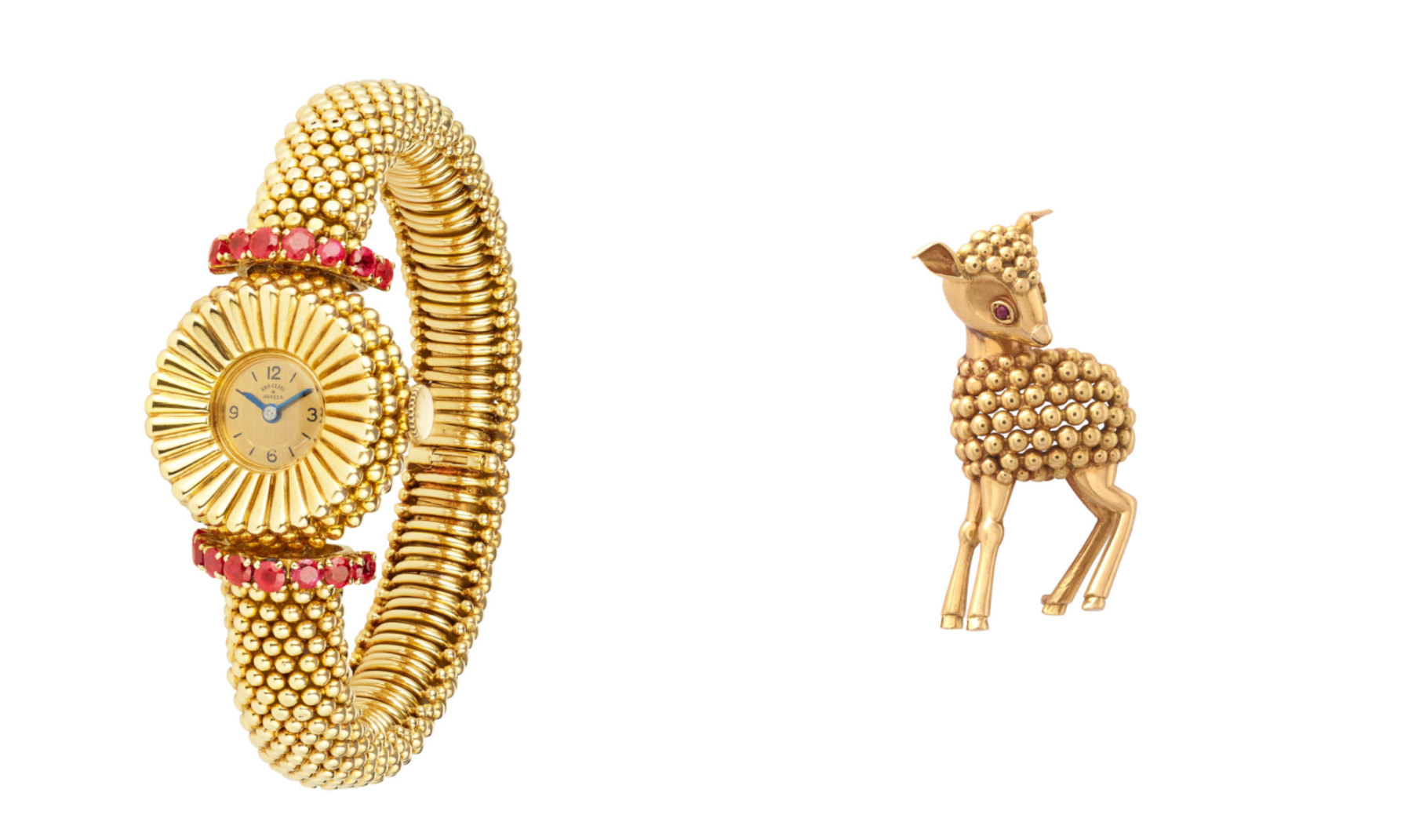
Above: Couscous Watch, 1949 (left); Little Doe Brooch, 1956 (right)

Above: “Time, Nature, Love: A Century of High Jewelry Art” exhibition pieces – Rose Brooch, 1959 (left); Swan Brooch, 1969 (right)
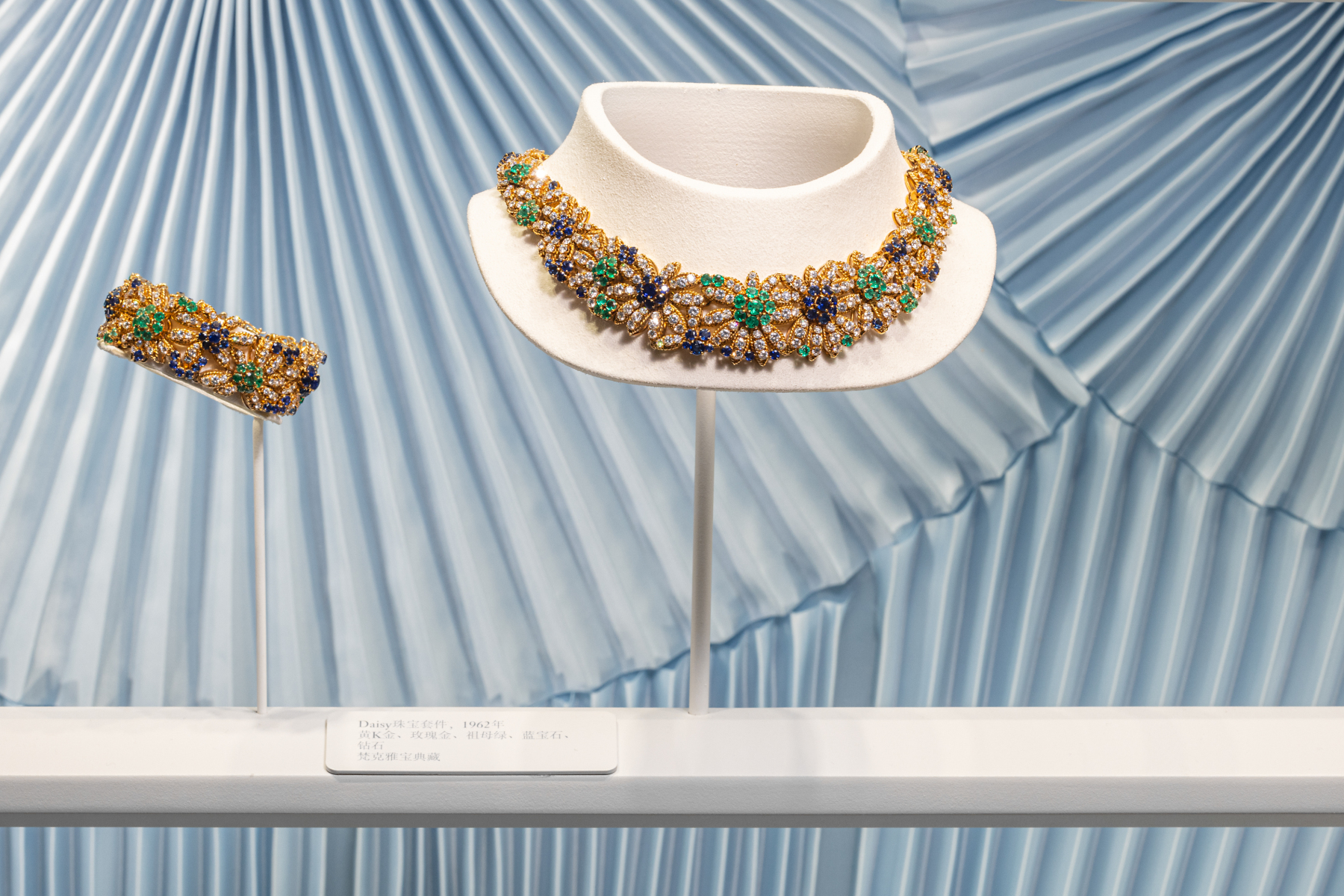
Above: Daisy Jewelry Set, 1962
Reflecting on the Maison’s sustained investment in every city and event in the Chinese market over the years, she said candidly, “This approach may seem unsophisticated, but it’s dependable. Ours is not a business like rocket science; there are no secrets that only we know and others don’t. The only reliable method is to persist with focus and dedication and to do our best.”
“This kind of consistency and perseverance isn’t easy, but it’s exactly what we must strive for in a volatile market. I believe these efforts will grow in our consumers’ hearts over time, becoming stronger and more meaningful.”
Luxe.CO: How do you view the fluctuations in the Chinese luxury market?
Laura Lai: We remain optimistic about the market, and I’ll cite three facts:
First, unlike consumers in many other countries, Chinese consumers have a high savings rate. The current conservative spending behavior is a result of increased caution due to economic pressures, not a lack of financial resources.
Second, over 70% of China’s luxury consumers are aged 25–40, and they contribute 80% of the total luxury spending. This means the luxury demographic is younger in China. Even if there’s a five-year slowdown, they’ll still be young when they return to consumption, and young people tend to be more resilient to economic pressure.
Third, we possess a strong sense of consistency, continuously delivering stable values. Former Van Cleef & Arpels Global President and CEO, now Richemont Group CEO, Nicolas Bos, often says that Van Cleef & Arpels has lived through two World Wars, the Great Depression, and the pandemic. In the grand sweep of history, such disruptions are but a moment—so he remains unshaken.
In times of market uncertainty and difficulty, the true essence and meaning of luxury becomes even more apparent. I believe these past two years may actually serve as a healthy transition for the Chinese market, allowing consumers to pause and reflect more deeply on the meaning of luxury consumption.
| Image Credit: Courtesy of Van Cleef & Arpels
| Editor: Zhu Ruoyu

